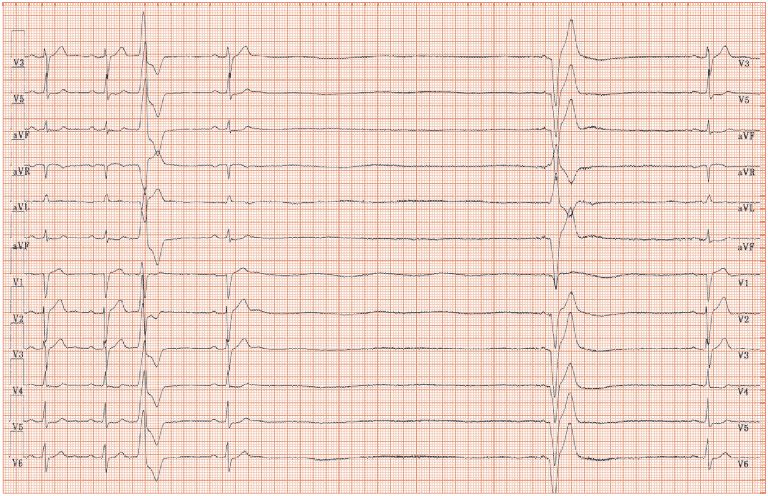Fig. 62.2 Carotid sinus massage: after excluding recent stroke, and carotid artery stenosis (clinically or by carotid Doppler), first the right then the left (shown here) carotid is gently massaged for 5 s. A continuous ECG printout is made, and blood pressure recorded every minute. A pause of 5 s results, then a single beat occurs, probably from a low atrial pacemaker (abnormal P wave shape, short PR interval), resulting in a broad QRS complex (of left bundle branch block morphology), then a further short pause, followed by normal sinus rhythm. This is a fairly strongly positive bradycardic response; the patient responded to dual chamber pacing.

Syncope has many causes (see Chapter 23): in clinical practice the important question is whether an arrhythmia is the cause (which is likely to be dangerous) or whether it is ‘reflex ’, i.e. a transient disruption in ‘the control of the circulation’ (when the prognosis is usually benign). In determining whether an arrhythmia underlies the event, obtaining an ECG during the episode is diagnostic. This can be difficult; various technologies are helpful (24-h, 7-day recordings, or external or internal loop recordings). If there is a high probability that a ‘disorder in the control of the circulation’ underlies symptoms, various ‘provocative’ tests help. These tests are designed to disturb the circulation, and then examine whether the response to this disturbance is normal, or such that could result in syncope. There is some controversy about these tests; some units find them highly reliable and reproducible, other are concerned about poor reproducibility and poor correlation with clinical events.
Tilt-table test
Stay updated, free articles. Join our Telegram channel

Full access? Get Clinical Tree


